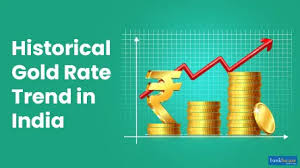The Kohinoor diamond, whose name means “Mountain of Light” in Persian, is one of the most famous and controversial gems in the world. With a history as multifaceted as the diamond itself, it has passed through the hands of emperors, conquerors, and colonizers, becoming a symbol of power, prestige, and colonial plunder. Though today it rests in the Tower of London as part of the British Crown Jewels, the legacy of the Kohinoor continues to spark debate and stir strong emotions across nations.
The Origins: A Diamond Born of Legends
The exact origins of the Kohinoor are shrouded in mystery, but most historians agree that it was mined in the Golconda region of present-day Andhra Pradesh, India, likely from the Kollur Mine on the banks of the Krishna River. This area was renowned for producing some of the world’s most valuable diamonds in the medieval period.
The first recorded mention of the diamond is believed to be in the memoirs of Babur, the founder of the Mughal Empire, in the 16th century. He referred to a stunning diamond that was likely the Kohinoor, although its history may date back even earlier—possibly as far as the 13th century. By the time it came into Babur’s possession, the diamond had already passed through the hands of various Indian dynasties, including the Kakatiyas and the Delhi Sultanate.
Mughal Magnificence
Under the Mughal Empire, the Kohinoor became a symbol of opulence and divine right to rule. It was part of the legendary Peacock Throne commissioned by Shah Jahan, the same emperor who built the Taj Mahal. The throne, encrusted with emeralds, rubies, and sapphires, was the ultimate display of Mughal wealth and power.
However, the diamond’s journey was far from over. In 1739, Persian ruler Nader Shah invaded India and looted Delhi. Among the treasures he took was the Peacock Throne, and with it, the Kohinoor. It was Nader Shah who reportedly gave the gem its iconic name—Koh-i-Noor.
A Diamond in Turmoil
After Nader Shah’s assassination, the diamond passed through several hands in Persia and Afghanistan before landing in the possession of Maharaja Ranjit Singh, the founder of the Sikh Empire, in the early 19th century. Under his reign, the Kohinoor was enshrined as a sacred and political symbol in the Punjab region.
Ranjit Singh willed the diamond to the Jagannath Temple in Puri, Odisha, but following his death, the British East India Company annexed Punjab in 1849 after the Second Anglo-Sikh War. The diamond was taken from the ten-year-old heir, Maharaja Duleep Singh, and presented to Queen Victoria as a spoil of war.
The British Era: Controversy and Ceremony
The Kohinoor arrived in Britain in 1850 and was formally presented to Queen Victoria. Initially displayed at the Great Exhibition in London, the diamond failed to impress the public due to its dull appearance. It was then recut from 186 carats to its current size of 105.6 carats to enhance its brilliance—though the act also removed a significant part of its original mass.
Since then, the Kohinoor has been set into various British crowns, most notably that of Queen Alexandra and later Queen Elizabeth, the Queen Mother. It now resides in the Tower of London as part of the Crown Jewels, mounted in the crown last worn by the Queen Mother.
Calls for Repatriation
In recent decades, calls for the return of the Kohinoor have intensified. India, Pakistan, Afghanistan, and even Iran have claimed ownership of the diamond, each citing historical possession and cultural significance. India, in particular, has frequently requested its return, arguing that it was taken under duress and represents a legacy of colonial exploitation.
The British government has consistently rejected these claims, stating that the diamond was acquired legally under the Treaty of Lahore. Nevertheless, the debate highlights the broader issue of colonial-era artifacts and their place in modern museums and national identities.
Conclusion: More Than Just a Gem

The Kohinoor is more than just a dazzling gemstone; it is a witness to centuries of conquest, colonization, and cultural change. Its story is entangled with the rise and fall of empires, the struggles for sovereignty, and the enduring impact of colonialism. As long as it remains in British possession, it will continue to be a symbol not only of royal regalia but of unresolved historical tensions.
Whether it ever returns to its land of origin remains uncertain. What is clear, however, is that the Kohinoor will continue to shine—as much for its beauty as for the weight of history it carries.
Lorem ipsum dolor sit amet, consectetur adipiscing elit. Ut elit tellus, luctus nec ullamcorper mattis, pulvinar dapibus leo.




